“Murderbot” Production Designer Sue Chan on Building the Brilliant World Around Alexander Skarsgård’s Conflicted Robot
Growing up in New Jersey with immigrant parents who ran a Chinese restaurant, Murderbot production designer Sue Chan didn’t even know the job existed when she first laid eyes on the futuristic movie that would inspire her journey into show business. “I basically decided to be an architect after going to see Blade Runner,” she recalls. “When I walked out of that movie theater with my family, I was like, ‘I want to do that. I want to be an architect.”
After studying design at Harvard, Chan worked at a San Francisco architectural firm before finding her way to Los Angeles. “What solidified in my brain is that I like to tell stories with environments,” says Chan. “I interned as a P.A. and then got to work with some great mentors. I just ate it up.”
Before designing Shang-Chi and the Legend of the Ten Rings and Where the Crawdads Sing, Chen art-directed three films for Murderbot co-creator Paul Weitz. He and brother Chris Weitz asked Chan in late 2023 to design Murderbot (streaming weekly on Apple TV + through July 11). In the future, robotic “Security Units” protect the human “PreservationAux” survey team dispatched by Corporate Rim bosses to scout a distant planet for natural resources. All hell breaks loose when one SecUnit, naming itself “Murderbot” (Alexander Skarsgård), secretly achieves free will and muddles through the complications of being nearly human.
Speaking from her home studio in Los Angeles’ Echo Park neighborhood, Chan talks geodesic domes, homicidal “Burrower” freaks, and eco-friendly technologies undergirding Murderbot in outer space.
Can you discuss the key challenges involved in designing the environment for Murderbot?
Murderbot is actually my first top-to-bottom world-building, capital-S sci-fi project. The challenges were also the virtues because here we are, imagining the diaspora of the human race hundreds of generations into the future.
What fueled your imagination?
Paul and Chris and [novelist] Martha Wells had it all on the page. The Corporation Rim, in all of its economic hegemony, was one anchor for me, contrasted with the PresAux team, which is…you know, the word “woke” is thrown around a lot, but I like to think of them as a polyamorous people who really care about culture. I looked at all the continents of our world – Etruscans, proto-Europeans, proto-Asians, Africa – and made a Bible. We asked ourselves, “If you meld all that together into motifs, textiles, pottery, flags, colors, symbolism, how would these elements come together for our PresAux team?”
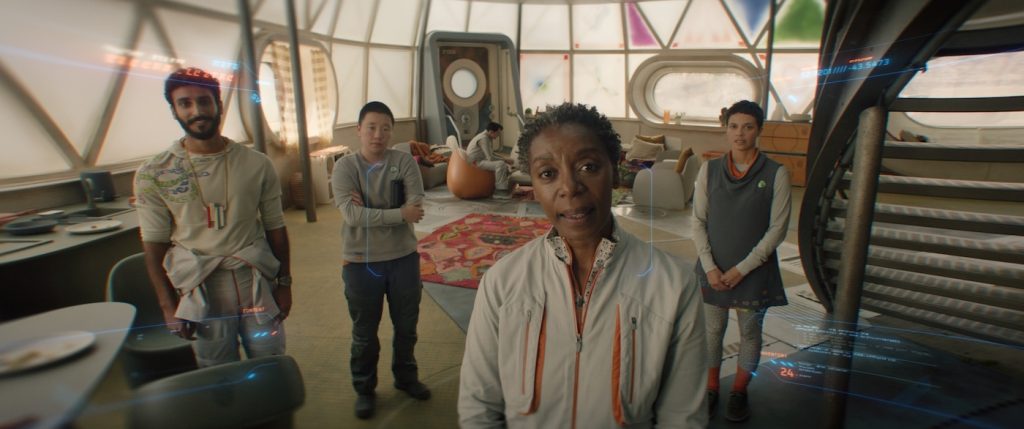
This “Bible” was analog, or was it digital?
It was digital, but then I had my team print out our favorite references. We covered the entire wall in the art department with images, so if the showrunner or the guest director or the producers or people from the studio came in, I could say to them, “Hey, over here, this is what we want to key off of for set design.”
The “Habitat” headquarters for the survey team looks kind of space-age, funky, filled with curves. What’s that about?
There are very few right angles in this show. Why go square if you don’t have to? We were influenced by the idea that a geodesic structure is very efficient.
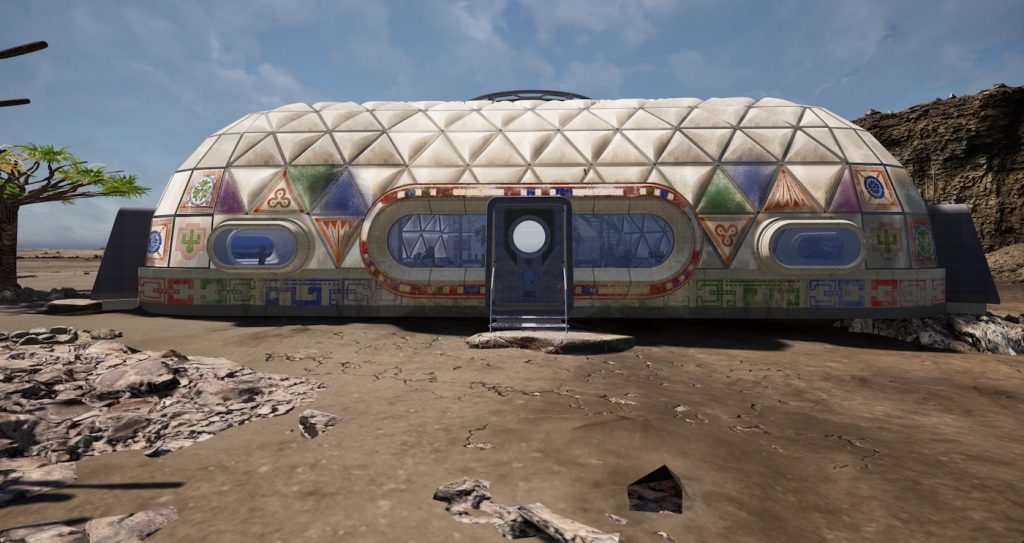
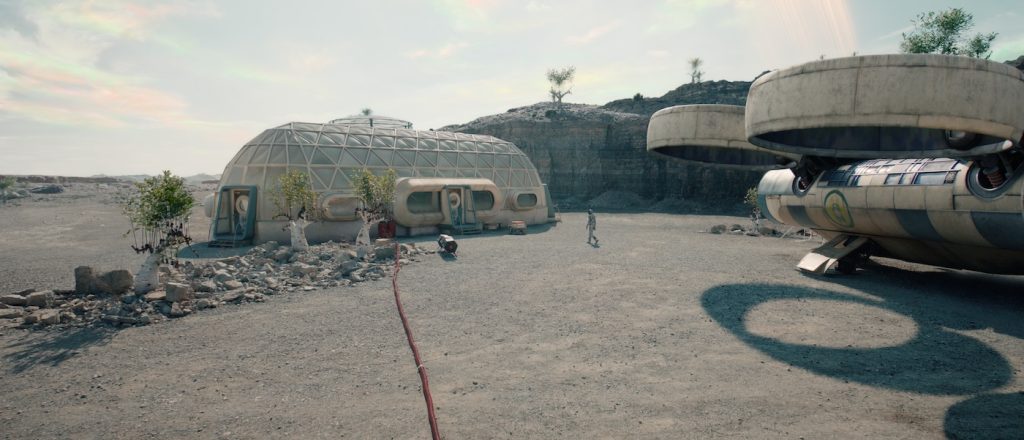
Besides the geodesic architecture, how did the Habitat reflect the mindset of the crew members living there?
The PresAux people are responsible stewards and wouldn’t want to plunder the planet to power their stations, so we wanted their Habitat to be passively powered. The skin of the Habitat is actually based on current solar technology using TPU [thermoplastic polyurethane] pillows that trap heat during the day and release it at night. We hired a company to build those pillows for us and inflated them inside this metal structure. We also had a company make amazing solar collectors that look like windmills, and we put a couple of those on set, along with water capture basins.
In the Murderbot future, nearly everything is 3-D printed, including the Habitat. Did you use 3-D printing in your own pre-production process?
We did print a few miniatures, and also, some components on the set were 3-D printed. We also modeled a lot of sets in [virtual] 3-D. We were able to put on goggles and see things in 3-D, and do walk-throughs in [computer graphics tool] Unreal Engine.
People get around on this planet on a hovercraft called “The Hopper.” What kind of tech powers this vehicle?
The Hopper is based on technology used in Dyson fans [invented by British designer James Dyson], which blow a lot of air through them. There are hover-cycles right now where one person can fly using that same kind of cylindrical air technology. We basically nuclearized Dyson fan technology for this aircraft, which is almost like a tour bus taking you from continent to continent without leaving the planet. It’s not a spacecraft. And like Murderbot itself, the Hopper is pretty beat up, so it’s been refurbished. That’s why you see panels that don’t match.
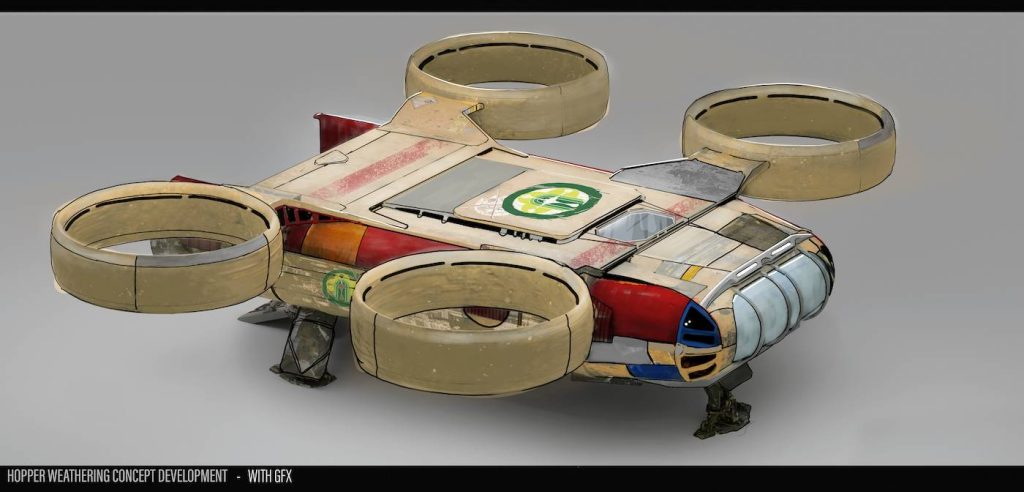
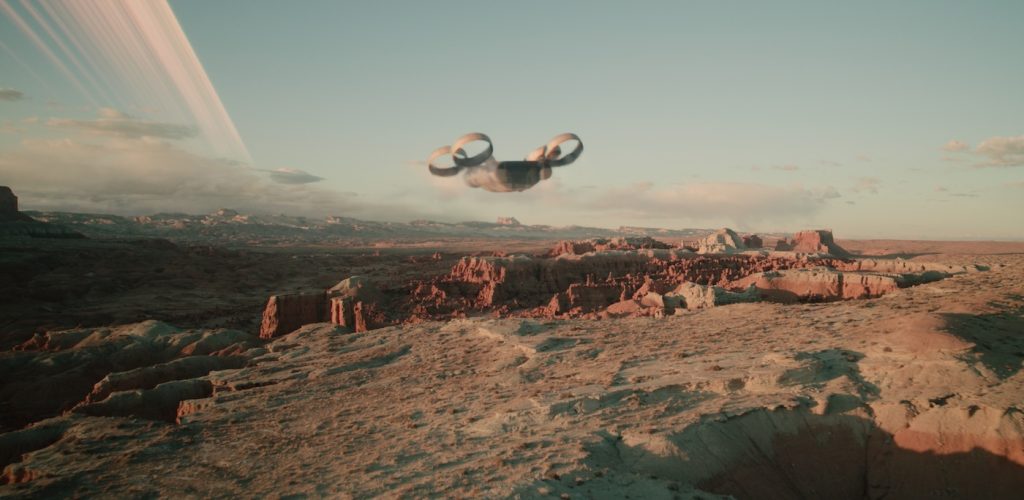
Murderbot takes place mainly on a desolate planet. Did you build the landscape practically, or is it primarily visual effects?
My team did all of the concept work and built as much practically as we could, like those little lollipop-shaped things. That’s slime mold, which thrives in a semi-volcanic environment. We designed each biome to have different flora and fauna, then sent all of that reference on to Sean Faden and his visual effects team. They finished the story.
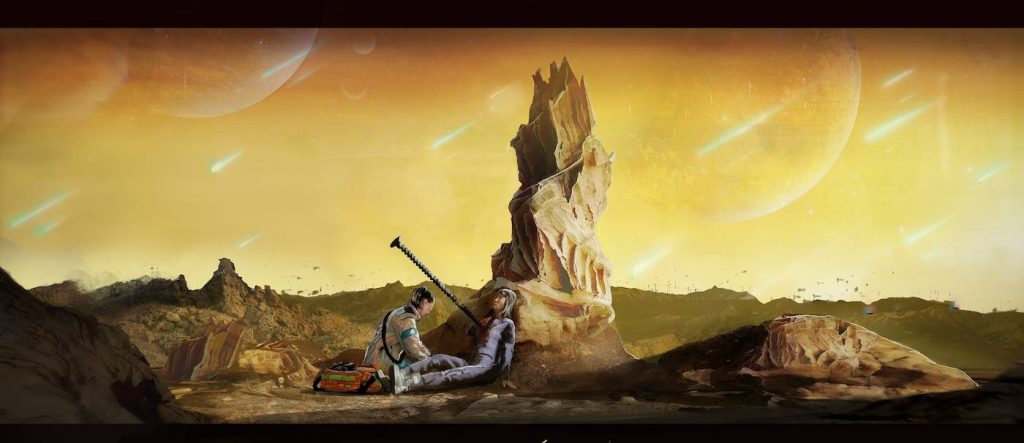
Did your team have a hand in designing the creepy “Burrower” creature?
Even before the show was greenlit, I had a stable of wonderful artists, including Guy Davis, who did the very first version of the Burrower. We talked about it being beige and insect-like with enormous teeth. Our prosthetics team built a set of jaws to augment the VFX, and we built the slimy interior, but the Burrower was almost 100 percent VFX.
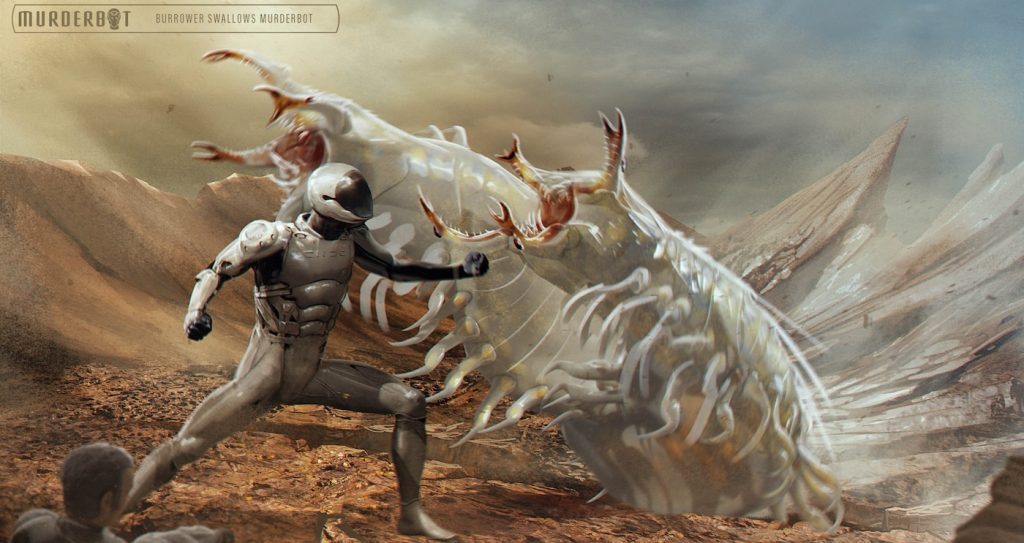
The color palette for the Habitat interior leans towards dusty orange, buttery yellow, and soft green, with limited use of vibrant primary colors. Why is that?
We wanted warm colors and a certain softness for the PresAux gang because those characters are the heroes, and also, who doesn’t love orange? We contrast that with their foes by using more metallic or desaturated colors for the Corporation Rim station, the DeltFall habitat, and the GreyCris group.
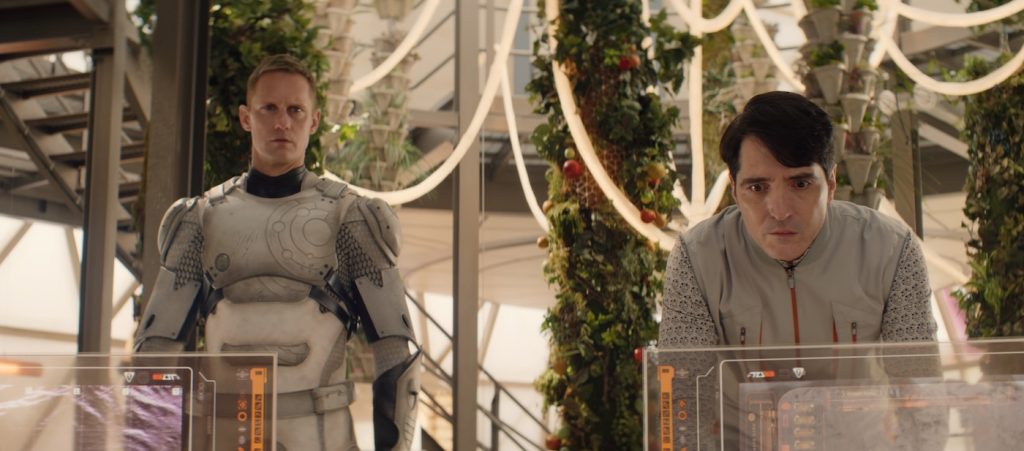
You first started working on Murderbot in late 2023. Given all the time you’ve invested in this world, what sticks with you the most?
I love that Paul and Chris achieved what they set out to do, which is to tell this very human story about the messiness and comedy of being a non-human character interacting with a bunch of humans. That’s not easy to do in science fiction, which tends to be overweighted with dystopia or high concept. For me, it was just nice to contribute to all these textures that help tell that story.
Featured image: Alexander Skarsgård in “Murderbot,” now streaming on Apple TV+.

